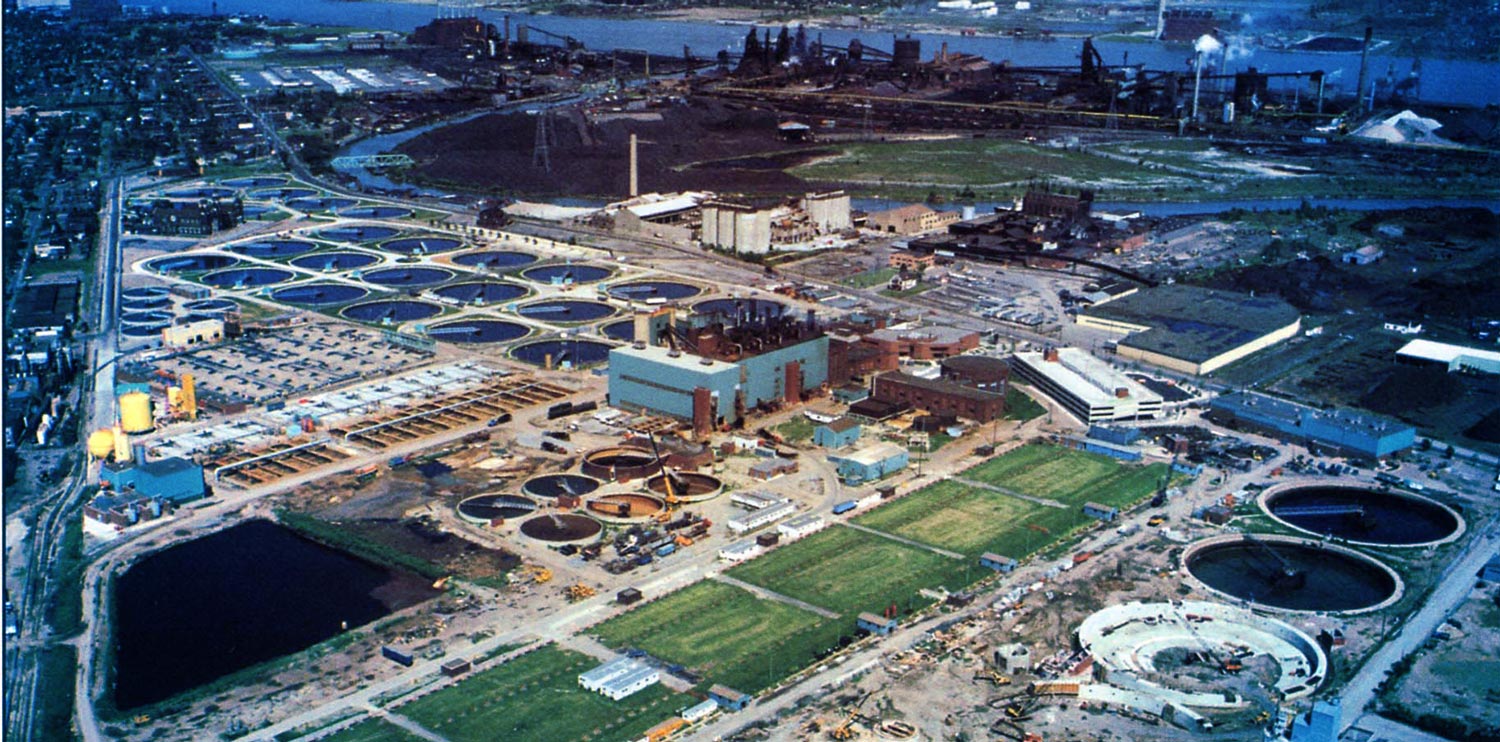Project Details
Client |
Location |
Services |
| Detroit Water and Sewerage Dept. | Detroit, MI |
Hubbell, Roth & Clark, Inc. (HRC) has provided wastewater-related engineering services to the City of Detroit for most of the company’s 90-year history. In fact, the genesis of wastewater treatment in Detroit was a report prepared by Clarence W. Hubbell in 1916 entitled “Preliminary Report on Sewage Disposal for the City of Detroit.” Construction of infrastructure in the amount of $40 million (at that time) occurred between 1916 and 1922 as an outcome of Clarence Hubbell’s work.
Disputes as to the location of the wastewater treatment plant and the Depression delayed construction until the mid-1930s. HRC were consultants on the design of the pumping station, grit chambers, and special baffles for the rectangular tanks for the first wastewater treatment plant.
The plant began operation in 1940 as a primary treatment plant, thereby preventing the untreated discharge of 400 MGD of raw sewage to the Detroit River. Together with treatment and chlorination of drinking water, sewage treatment eliminated typhoid which affected 1 out of 1,000 people earlier in the century.
The grit chambers were an innovative design of George Hubbell’s, which he tested in a hydraulic scale model in 1936. The successful results of the modeling were presented in “Grit Chamber Model Tests for Detroit, Michigan, Sewage Treatment Project,” George E. Hubbell, ASCE Transactions, Vol. 104 (1939).
The rectangular settling tanks were fitted with inlet baffles designed and tested by George Hubbell. The results proved a significant increase in suspended solids removal. The results were presented in “Experiments with Inlet Devices for Sedimentation Tanks,” George E. Hubbell, Sewage Works Journal, Vol. VI, July 1934.
Between 1966 and 1985, HRC engineered 47 projects totaling $326 million (at that time) in construction. These additions further reduced solids, biochemical oxygen demand, and, for the first time, phosphorus made it the largest-rated secondary treatment facility in one location in the world, at one billion gallons per day. The plant’s innovative and patented treatment units also resulted in tremendous savings in construction and real estate costs in a densely populated and developed section of southwest Detroit.
Circular primary sedimentation tanks, 250 feet in diameter and featuring an innovative inlet configuration, allowed a surface loading of 3,000 gallons per square foot per day, instead of the usual 1,000. Detention time in these 150-MGD tanks was halved from two hours to one hour. The research for this type of inlet was published in “Hydraulic Characteristics of Various Circular Tanks,” George E. Hubbell, Journal of the American Water Works Association,” Vol. 30, February 1938.
An innovative air aeration system for activated sludge was developed by George E. Hubbell in a pilot plant and full scale trial. Side water depth was doubled to 30 feet, and aeration time was halved to four hours. By using pure oxygen instead of air, aeration time was halved again to just two hours. The system was rated at 1,200 MGD.
Circular secondary clarifiers, (200 feet in diameter) rated at 38 MGD each, were developed through the use of hydraulic models. The design featured peripheral feed and peripheral effluent channels that allowed a surface loading rate of 1,200 gallons per square foot per day, instead of the usual 800, in the same detention time (two hours). Twenty-five were installed. The design resulted in one of the many patents HRC has received.
Sludge digesters were excluded from the sludge processing system, as incineration of raw, dewatered sludge proved effective. This saved the enormous construction costs and the land acquisition necessary to accommodate the numerous digesters an 800-MGD flow would have demanded.
Remarkably, all the facilities needed to treat the average flow of 800 MGD from a population of 4.5 million are situated on just 140 acres. Without these innovative designs, the plant would have required at least 320 acres.
HRC design work during that interval encompassed pumping, aeration (air and oxygen), incineration, clarification, solids handling and dewatering, screening, chemical systems, conveyance, electrical systems, and facilities.
It is estimated that 75% of the work-in-place at the Detroit Wastewater Treatment Plant was engineered by HRC.


